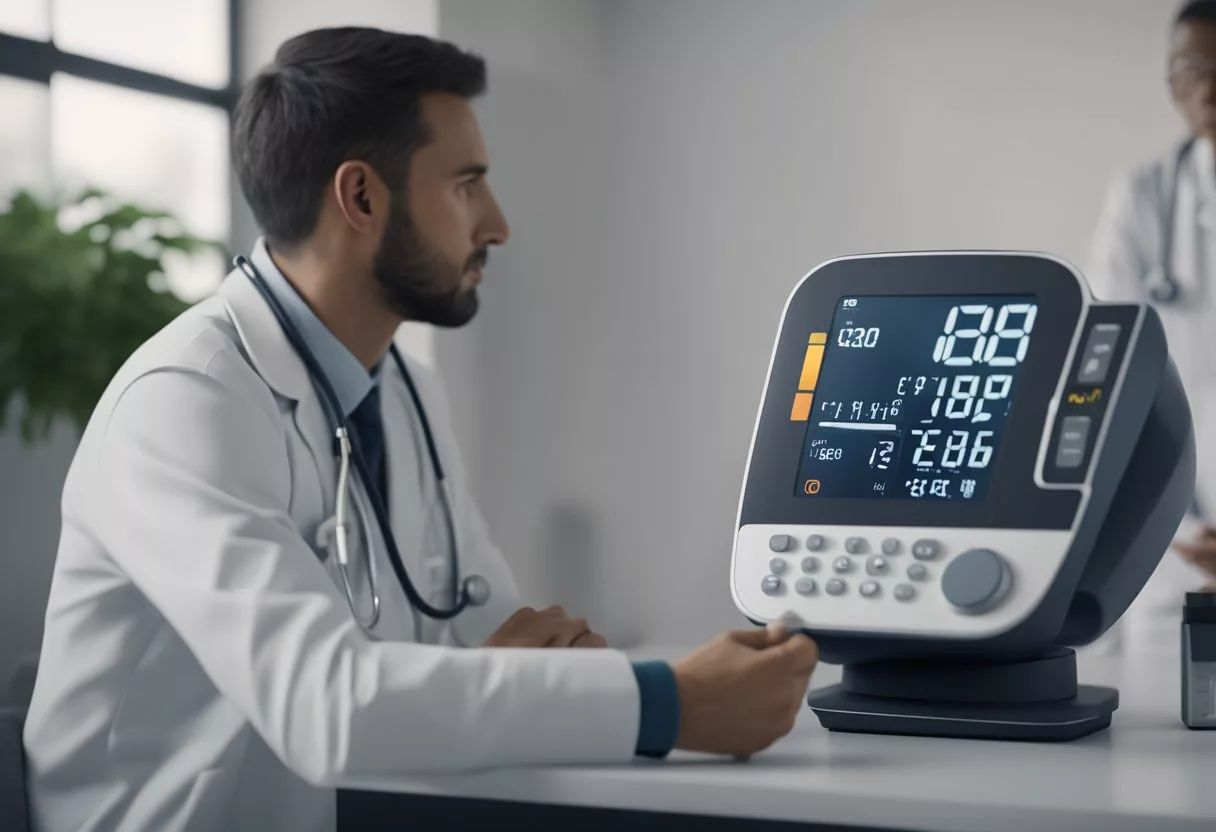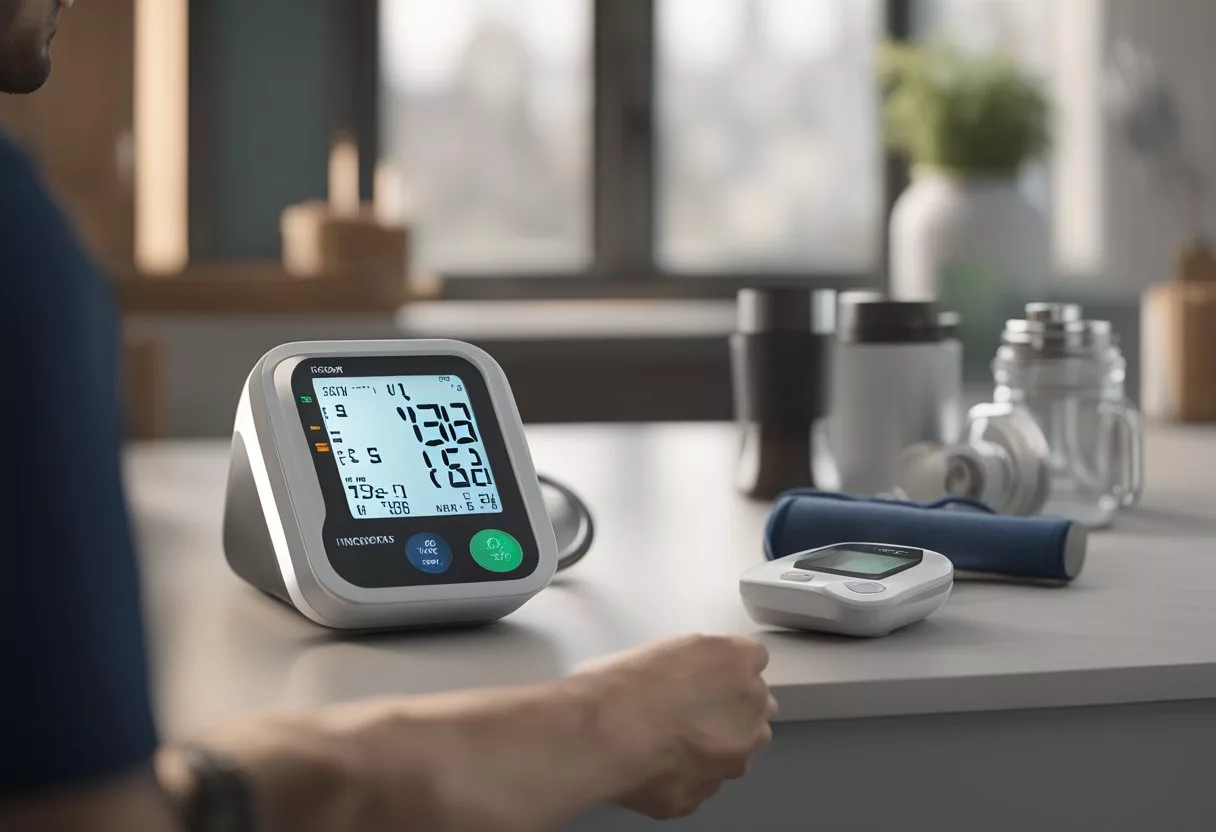High blood pressure, also known as hypertension, is a common but serious health issue. It occurs when the force of blood flowing through your blood vessels is consistently too high. This condition can lead to severe health problems like heart disease, stroke, and kidney disease. Understanding what high blood pressure is and how to manage it can help improve your quality of life.

Symptoms of high blood pressure can often go unnoticed, making routine checks essential. Lifestyle changes, such as eating a healthy diet, exercising regularly, and limiting alcohol intake, can significantly impact your blood pressure levels. Using resources like the American Heart Association or the Mayo Clinic can provide essential information and support.
Managing high blood pressure may also involve medications prescribed by your doctor. Regular home blood pressure monitoring and adopting healthy routines are crucial steps in maintaining control. By taking these actions, you reduce your risk of severe complications and lead a healthier life.
Key Takeaways
- Understanding high blood pressure is vital for effective management.
- Lifestyle changes can significantly lower blood pressure.
- Regular monitoring and medical guidance are essential.
Understanding High Blood Pressure
High blood pressure, or hypertension, is a critical health concern that affects many people. It can lead to serious complications including heart attacks and strokes if left unmanaged.
Definition and Importance
High blood pressure means the force of blood against the walls of your arteries is too high. This condition can cause damage to your blood vessels, heart, and other organs.
The American Heart Association states that normal blood pressure is below 120/80 mm Hg. Elevated blood pressure can lead to health problems like heart disease and kidney disease. It is critical to monitor and manage high blood pressure to prevent serious complications.
Causes and Risk Factors
There are several factors that can lead to high blood pressure. Age is a big one, as blood pressure often rises with age. Lifestyle choices like lack of physical activity, poor diet, and smoking can also increase the risk.
Family history and genetics play a significant role as well. Chronic conditions such as diabetes or kidney disease also add to the risk. Monitoring these factors can help in early detection and prevention.
The Role of Blood Vessels and the Heart
The heart and blood vessels work together to circulate blood throughout the body. High blood pressure happens when the blood puts too much force against the artery walls, making the heart work harder. This extra effort can thicken the walls of the heart’s pumping chamber and lead to heart failure or other heart issues.
Over time, high blood pressure can cause the arteries to harden and narrow, leading to more severe cardiovascular problems.
Understanding Blood Pressure Readings
Blood pressure readings consist of two numbers measured in millimeters of mercury (mm Hg). The systolic number (top) represents the pressure when the heart beats, while the diastolic number (bottom) measures pressure between beats.
According to the American College of Cardiology, normal readings are below 120/80 mm Hg. Readings between 120-129/80 are considered elevated, while 130-139/80-89 is stage 1 hypertension. Readings of 140/90 or higher indicate stage 2 hypertension.
Understanding these readings is key to knowing when to take action and seek treatment.
Symptoms and Diagnosis

High blood pressure, also known as hypertension, often shows no symptoms but can lead to serious health problems if not diagnosed and managed properly. Regular blood pressure checks and proper diagnostic techniques are crucial.
Recognizing the Symptoms
Hypertension is often called a “silent killer” because it usually has no noticeable symptoms. When symptoms do appear, they may include headaches, shortness of breath, or nosebleeds. These symptoms are not unique to high blood pressure and typically only occur when blood pressure reaches dangerous levels. A sudden spike in readings, such as 180/120 millimeters of mercury (mm Hg) or higher, could signify a hypertensive crisis, necessitating immediate care from a health care professional. Chronic high blood pressure can also lead to complications like vision loss and dementia.
Importance of Regular Blood Pressure Checks
Regular blood pressure checks are imperative for early detection and management of hypertension. Diagnosing high blood pressure usually involves taking two or more readings on different occasions to ensure accuracy. This helps in identifying whether the blood pressure is consistently high. Home monitoring devices are increasingly used, allowing individuals to keep track of their blood pressure between clinic visits. Health care providers often recommend keeping a log of these readings to provide a clearer picture of blood pressure trends over time.
Diagnostic Techniques
Diagnosing high blood pressure involves various techniques to ensure accurate measurements. The most common method is the use of a sphygmomanometer, which measures blood pressure in millimeters of mercury (mm Hg). In addition to manual readings, automated devices can help minimize error. Health care providers may also conduct blood tests, urine tests, and electrocardiograms (ECGs) to assess related health issues. The diagnosis typically considers factors like age, gender, and any underlying conditions that could affect blood pressure levels. Regular follow-ups are essential to monitor the effectiveness of any treatment plan and to detect any new symptoms or complications early on.
Lifestyle and Prevention

Making lifestyle changes can notably lower the risk of high blood pressure and other related health issues. This involves healthier eating, regular physical activity, maintaining a balanced weight, managing substance use, and handling stress effectively.
Diet and Nutrition
Eating a healthy diet is crucial for managing high blood pressure. Including plenty of fruits and vegetables in daily meals can help. Foods rich in potassium, such as bananas, potatoes, and spinach, can help balance sodium levels. Reducing sodium intake is also vital, as excess salt can increase blood pressure.
Cooking at home allows better control over dietary sodium. The DASH diet (Dietary Approaches to Stop Hypertension) recommends limiting processed foods and focusing on whole grains, lean proteins, and low-fat dairy. Consulting a healthcare professional can provide personalized dietary advice.
Physical Activity and Exercise
Regular exercise plays a significant role in preventing high blood pressure. Engaging in physical activity such as brisk walking, cycling, or swimming for at least 30 minutes most days of the week can improve heart health.
Exercise helps manage weight, reduce stress, and lower blood pressure. Strength training, done two or more days per week, can also be beneficial. It’s important to choose activities that are enjoyable to maintain consistency. Consultation with a healthcare professional is advised for personalized exercise plans, especially for beginners.
Maintaining a Healthy Weight
Keeping a healthy weight is important in preventing high blood pressure. Losing even a small amount of weight if one is overweight can have a significant impact. Body Mass Index (BMI) is a simple measure to determine if one’s weight is within a healthy range.
Obesity increases the risk of high blood pressure and other cardiovascular diseases. Monitoring calorie intake and making healthier food choices can aid in weight management. Regular physical activity, as previously discussed, is a key part of maintaining a healthy weight, along with dietary control.
Substance Use and High Blood Pressure
Limiting alcohol and avoiding smoking are vital for blood pressure management. Limiting alcohol consumption to one drink per day for women and two for men can contribute to lower blood pressure.
Smoking and caffeine can also affect blood pressure levels. Quitting smoking improves heart health and helps prevent hypertension. Healthcare professionals can offer resources for smoking cessation and moderating caffeine intake.
Stress Management
Addressing stress is essential to lower the risk of high blood pressure. Chronic stress can lead to unhealthy habits like overeating, poor sleep, and substance misuse. Techniques such as deep breathing, meditation, and regular physical activity can help manage stress.
Engaging in hobbies, spending time with loved ones, and ensuring adequate sleep are also beneficial. It’s important to recognize stressors and seek support when needed. Managing stress effectively supports a healthy lifestyle and contributes to better heart health.
Medical Treatment Options

High blood pressure can be managed with a variety of medical treatments. These options include different medications and innovative approaches to enhance treatment effectiveness. It is important to understand the potential side effects of these treatments.
Blood Pressure Medications
Blood pressure medications play a key role in managing high blood pressure. Common classes include diuretics, ACE inhibitors, beta-blockers, and calcium channel blockers. Diuretics remove extra water and sodium from the body, reducing blood volume. Calcium channel blockers relax blood vessels by preventing calcium from entering the cells of the heart and arteries. These medicines are often prescribed based on the individual’s specific health situation and may be used in combination to achieve the best results. Choosing appropriate medications involves careful consideration by a health care professional.
Innovations in Treatment
Recent research has led to several innovations in treatment for high blood pressure. These include devices that stimulate nerves and new drug combinations. Some treatments focus on lifestyle changes such as diet and exercise, while others involve advanced therapies like renal denervation. This technique interrupts nerves from the kidneys to the blood vessels, lowering blood pressure. Clinical trials are continuously exploring the benefits of new treatments, aiming for safer and more effective options. Technological advances play a significant role in providing individualized treatment plans that consider each patient’s unique needs.
Understanding Medication Side Effects
Understanding medication side effects is crucial for those undergoing treatment. Common side effects of blood pressure medicines can include dizziness, headaches, and fatigue. For example, diuretics might cause increased urination and loss of potassium, while beta-blockers may lead to slower heart rates and fatigue. It’s important to discuss any side effects with a health care professional, as they can adjust the treatment plan to minimize discomfort. Being aware of potential side effects helps patients stay informed and proactive in managing their health.
Monitoring and Managing High Blood Pressure

Effectively managing high blood pressure involves a mix of self-monitoring strategies, professional care, and strong communication between patients and their healthcare providers. Here are key steps and practices to ensure successful management and monitoring.
Self-Monitoring Strategies
Using a home blood pressure monitor is crucial for keeping track of your blood pressure levels regularly. Home blood pressure monitoring helps you measure your blood pressure at various times throughout the day. This data can be recorded in a blood pressure chart to track changes over time.
Regular monitoring aids in detecting patterns. It can also alert you to any sudden changes that might need urgent attention. Integrating healthy lifestyle habits such as a balanced diet and exercise can significantly influence the readings.
Monitoring at home provides a more accurate picture of blood pressure, as it avoids the “white coat” effect often seen in clinical settings. It is important to follow the manufacturer’s instructions for the home blood pressure monitor to ensure accurate readings.
Professional Care and Follow-Up
Working closely with healthcare professionals is essential in managing high blood pressure. Regular follow-ups help in adjusting medications and checking for any side effects or complications. Professionals can guide you in interpreting the data from home blood pressure monitoring and advise on necessary changes.
Team-based care, where a group of professionals works together, can offer comprehensive support. This approach can include specialists who manage conditions like kidney failure or metabolic syndrome, which often accompany chronic high blood pressure.
A care provider can help set realistic goals and strategies tailored to your specific needs. They can also provide advice on lifestyle changes that can help manage blood pressure.
Collaboration and Communication in Care
Effective communication and collaboration between patients and their healthcare team build trust and ensure a cohesive management plan. Open and honest communication allows for better understanding of the condition and the treatment plan.
Patients should keep their healthcare providers informed about any changes in their condition or any concerns they might have. This teamwork can lead to better outcomes and a higher quality of care.
Regularly updating your team on home blood pressure readings and any health changes ensures that everyone involved in your care is on the same page. Establishing a supportive relationship with your healthcare providers fosters an environment where both patient and provider work together towards a common goal: maintaining healthy blood pressure levels.
High Blood Pressure in Special Populations

High blood pressure can affect individuals differently depending on their age and health status. Certain groups, such as children and adolescents, pregnant women, and older adults, may experience unique challenges and considerations.
Children and Adolescents
Though less common, high blood pressure does occur in children and teens. It can be influenced by factors like obesity, a family history of hypertension, and congenital heart defects. Early detection is crucial to prevent future health issues.
Kids may need to have their blood pressure monitored regularly, especially if they are overweight or have a family history of heart disease. Lifestyle changes, such as diet and exercise, are often the first line of treatment. In some severe cases, medication may be necessary.
It’s important for guardians and healthcare providers to work together to create a plan that helps manage and monitor a child’s blood pressure effectively. Regular check-ups can ensure issues are caught early and managed properly.
Pregnant Women
High blood pressure during pregnancy can pose risks to both the mother and the baby. Conditions like preeclampsia are serious and require careful management. Pregnant women need to have their blood pressure checked regularly.
Monitoring can help detect issues early and allow for timely intervention. Treatment options may include lifestyle changes, medications deemed safe during pregnancy, and in some cases, more frequent hospital visits.
Women with a history of hypertension are at a higher risk and should be monitored closely. Managing blood pressure during pregnancy is essential for the health of both the mother and the developing baby.
Older Adults
As people age, the risk of high blood pressure increases. Older adults need to be particularly vigilant about monitoring their blood pressure, as hypertension can lead to complications like stroke and heart disease.
Regular check-ups and blood pressure readings are recommended. Older adults may need medication to control their hypertension, and it’s important to manage other conditions like diabetes and high cholesterol, which can exacerbate the issue.
Lifestyle changes, including reducing salt intake, eating a healthy diet, and staying active, can also help manage blood pressure. Family members and caregivers play a vital role in supporting older adults to maintain their health and follow treatment plans.
Community and Resources

Understanding and managing high blood pressure involves not just individual efforts but also community resources. Organizations like the American Heart Association play a critical role in providing education, support, and volunteer opportunities to help manage and reduce hypertension.
The Role of the American Heart Association
The American Heart Association (AHA) offers many programs and resources to help manage blood pressure. They provide online modules that explain blood pressure numbers, lifestyle changes, and treatments. These modules take about 15 minutes to complete and can be shared with family and friends. The AHA also launched the National Hypertension Control Initiative to address health inequities and reduce high blood pressure in under-resourced neighborhoods.
Support Groups and Volunteer Opportunities
Support groups are essential for individuals managing high blood pressure. They offer a space to share experiences, receive emotional support, and learn from others. Many organizations, including the AHA, facilitate these groups. Volunteer opportunities are also available, allowing individuals to contribute to public health initiatives. Volunteering can involve helping in local health fairs, developing educational materials, or providing community outreach about hypertension prevention.
Educational Materials and Resources
Educational materials are crucial in spreading awareness about high blood pressure. The CDC’s High Blood Pressure Communications Toolkit offers social media messages, graphics, and other tools to educate the public. The AHA also provides resources on how to self-measure blood pressure and understand its significance. These materials are designed to be easily understood, ensuring that individuals and communities can take proactive steps to manage their health effectively.
Frequently Asked Questions

Managing high blood pressure involves various methods including home remedies, dietary changes, and emergency techniques. Understanding how to read blood pressure charts and adopting healthy lifestyle changes are also crucial.
What are effective home remedies for lowering high blood pressure?
Home remedies such as regular exercise, reducing salt intake, and stress management can help lower blood pressure. Techniques like deep breathing, yoga, and meditation are also beneficial.
Which foods can help decrease blood pressure rapidly?
Foods rich in potassium, like bananas, spinach, and sweet potatoes, can help lower blood pressure. Low-fat dairy, beets, and dark chocolate are also effective in reducing blood pressure levels.
How can high blood pressure be reduced instantly in emergency situations?
In emergencies, deep breathing exercises and sitting in a relaxed position can help. Drinking water and consuming potassium-rich foods like bananas can also provide quick relief.
What techniques can be applied to quickly manage spikes in blood pressure?
Techniques such as slowing down breathing, doing light exercise, and avoiding stimulants like caffeine and alcohol can help manage sudden spikes in blood pressure. Staying calm and relaxed is crucial.
How does one interpret readings from a blood pressure chart correctly?
Blood pressure readings consist of two numbers: systolic (top number) and diastolic (bottom number). A reading below 120/80 mm Hg is considered normal, while readings above 130/80 mm Hg indicate high blood pressure.
What are the best lifestyle changes for maintaining optimal blood pressure levels?
Maintaining a healthy weight, eating a balanced diet, exercising regularly, and avoiding smoking can help keep blood pressure at healthy levels. Reducing stress and limiting alcohol consumption are also important.